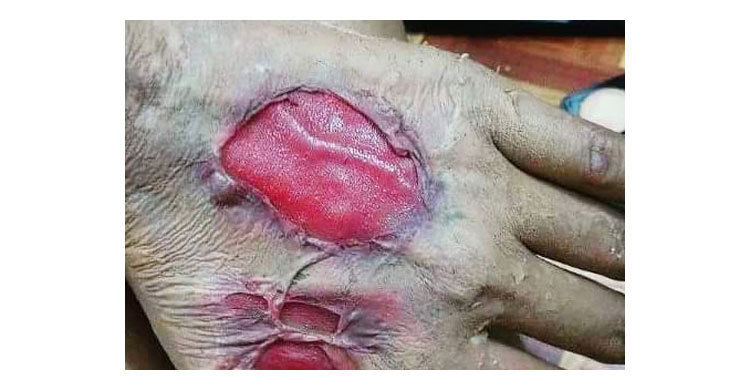Special effects school aims to mould film industry

Special effects-already a main-stay in Hollywood blockbusters-make all the difference in creating movie magic.
They can take a model or actress from fashion feature to gruesome creature in a matter of hours.
It is also a heavily respected art form, with the Academy Awards honouring bests in make-up and hairstyling since 1981.
In Myanmar, however, the art has yet to take root.
“In other countries, this technique is exceedingly popular,” Aung Kyaw Htun said. “But it is not in our tradition.”
Until now, there were no schools or classes to teach the techniques and there is little interest from local directors to use the effects in their films. Without these special effects, Aung Kyaw Htun believes the Myanmar film industry will be stunted.
“There are no adventure or science fiction films in Myanmar just yet,” he said. “Without modern techniques they can never become reality.”
His school, which he hopes will fill the industry’s gap, is opening for the first time this month and already has 20 students enrolled.
It will be three months long, two days per week with a cost of K300,000 (US$270), excluding supplies.
The course will specialise on applying make-up for theatrical effects, colouring, chemical terms and conditions, lab techniques and silicon sculpturing for bald caps, prosthetic noses, scars and wounds, and fantasy creations.
The 47-year-old artist-turned-teacher has experience in sculpture, painting and a degree in film-making while his special effects skills are all self-taught-and under-appreciated.
“One time I received an order for fake wounds to be used in a movie,” he said. “The director called me and asked me to make them, but wouldn’t allow me to come to the set to fit them on the actors. He said he would do it himself to save money.”
“I got the feeling that they didn’t respect this art or me as an artist.”
Aung Kyaw Htun has also created countless bald caps, wounds and creatures for local advertisements and films.
He is perhaps best known for his silicone sculpture commemorating Bogyoke Aung San’s 100th birthday, which is just one of over 100 such silicone creations he has made.
Despite his past experiences, his hopes for the future of special effects in Myanmar remain high.
“We need these techniques in our country,” he said.
“If special effects undergo a boom, then the limits of film-making are only restricted by the extent of the film-makers’ imaginations.”
“It’s exactly what we need to modernise our film industry.”


